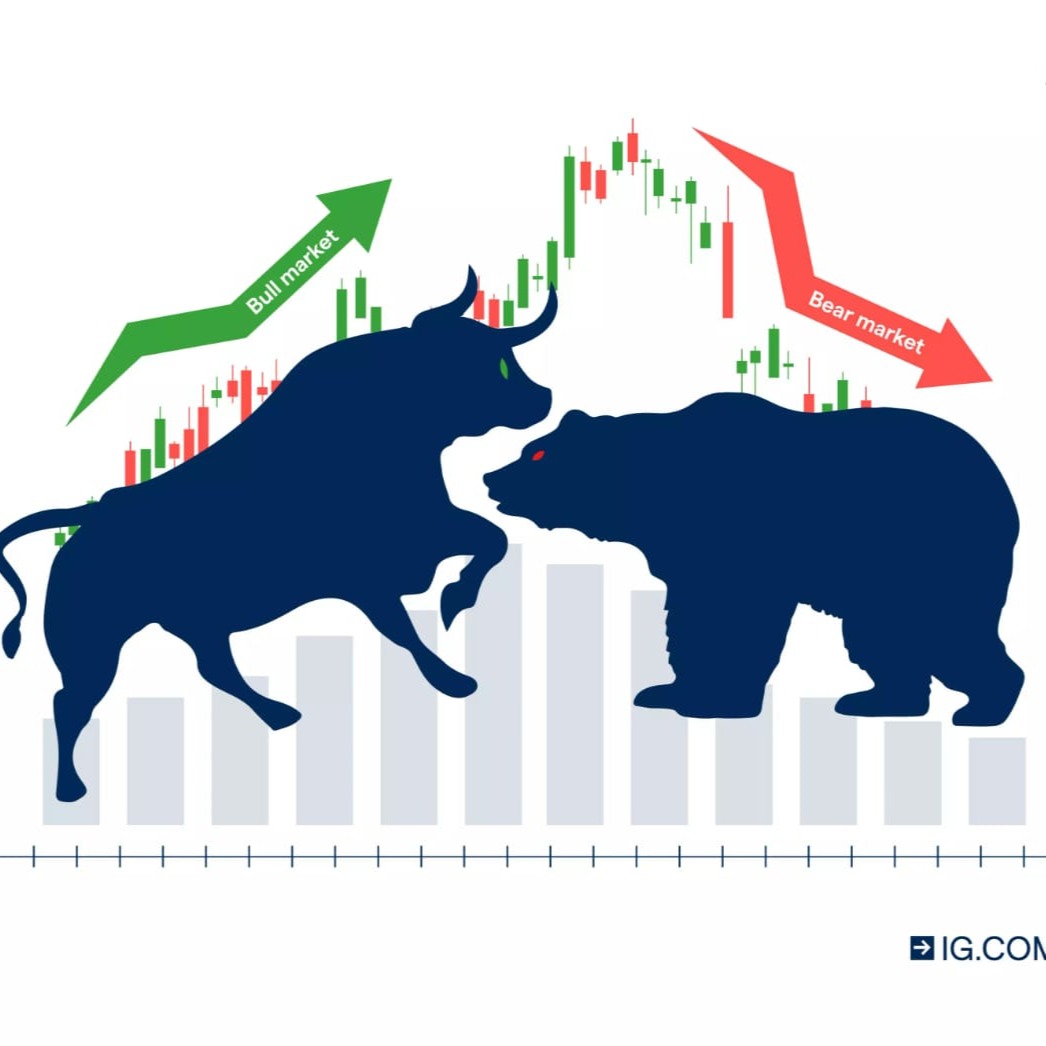Gasの価格チャート(JPY/GAS)
最終更新:2025-11-01 09:26:47(UTC+0)
GASからJPYへの交換
GAS
JPY
1 GAS = 392.27 JPY。現在の1 Gas(GAS)からJPYへの交換価格は392.27です。このレートはあくまで参考としてご活用ください。
Bitgetは、主要取引プラットフォームの中で最も低い取引手数料を提供しています。VIPレベルが高ければ高いほど、より有利なレートが適用されます。
現在のGas価格(JPY)
現在、Gasの価格は¥392.27 JPYで時価総額は¥25.49Bです。Gasの価格は過去24時間で1.04%上昇し、24時間の取引量は¥847.50Mです。GAS/JPY(GasからJPY)の交換レートはリアルタイムで更新されます。
1 Gasは日本円換算でいくらですか?
現在のGas(GAS)価格は日本円換算で¥392.27 JPYです。現在、1 GASを¥392.27、または0.02549 GASを¥10で購入できます。過去24時間のGASからJPYへの最高価格は¥391.54 JPY、GASからJPYへの最低価格は¥381.91 JPYでした。
Gasの価格は今日上がると思いますか、下がると思いますか?
総投票数:
上昇
0
下落
0
投票データは24時間ごとに更新されます。これは、Gasの価格動向に関するコミュニティの予測を反映したものであり、投資アドバイスと見なされるべきではありません。
Gasの市場情報
価格の推移(24時間)
24時間
24時間の最低価格:¥381.9124時間の最高価格:¥391.54
過去最高値(ATH):
¥15,029.02
価格変動率(24時間):
+1.04%
価格変動率(7日間):
-2.08%
価格変動率(1年):
-31.46%
時価総額順位:
#199
時価総額:
¥25,494,771,922.6
完全希薄化の時価総額:
¥25,494,771,922.6
24時間取引量:
¥847,495,744.76
循環供給量:
64.99M GAS
最大供給量:
--
Gas (GAS)について
加密货币的燃料 - 了解加密货币Gas
在加密货币世界中,Gas是一个重要的概念,它在许多区块链平台上起着关键的作用。Gas是以太坊网络上的一种加密货币单位,用于支付交易费用和执行智能合约。
Gas的作用是确保网络的正常运行和交易的顺利执行。在以太坊平台上,每个交易和智能合约的执行都需要一定数量的Gas。这些Gas费用是以太币(ETH)支付的,因此用户需要有一定数量的以太币来支付交易费用。
Gas的数量取决于交易的复杂性和计算资源的消耗量。如果一个交易或智能合约需要大量的计算资源和时间来执行,那么所需的Gas就会更多。这意味着复杂的交易和智能合约需要更高的Gas费用。
Gas的使用还有助于防止恶意行为和网络拥堵。通过向交易和智能合约执行者收取一定数量的Gas费用,平台可以减少恶意活动和滥用行为。此外,由于每个交易都需要一定数量的Gas,这也可以抑制网络拥堵,使整个系统更加高效。
通过支付Gas费用,用户可以优先处理他们的交易。高额的Gas费用意味着该交易将被优先处理,确保快速完成,而低额的Gas费用则可能导致较慢的确认速度。
总结一下,Gas在加密货币世界中扮演着重要角色,它用于支付交易费用和执行智能合约,并确保网络的安全性和顺畅运行。通过设定Gas价格,用户可以优化交易的处理时间和速度。了解加密货币Gas的概念和作用,对于参与加密货币交易以及使用基于区块链技术的应用程序是至关重要的。
もっと見る
GasのAI分析レポート
本日の暗号資産市場のハイライトレポートを見る
Gasの価格履歴(JPY)
Gasの価格は、この1年で-31.46%を記録しました。直近1年間のJPY建てGASの最高値は¥1,181.47で、直近1年間のJPY建てGASの最安値は¥268.8でした。
時間価格変動率(%) 最低価格
最低価格 最高価格
最高価格 
 最低価格
最低価格 最高価格
最高価格 
24h+1.04%¥381.91¥391.54
7d-2.08%¥373.58¥420.12
30d-18.51%¥268.8¥491.14
90d-13.30%¥268.8¥596.12
1y-31.46%¥268.8¥1,181.47
すべての期間+42.42%¥92.36(2020-03-13, 5年前)¥15,029.02(2018-01-15, 7年前)
Gasの最高価格はいくらですか?
GASの過去最高値(ATH)はJPY換算で¥15,029.02で、2018-01-15に記録されました。GasのATHと比較すると、Gasの現在価格は97.39%下落しています。
Gasの最安価格はいくらですか?
GASの過去最安値(ATL)はJPY換算で¥92.36で、2020-03-13に記録されました。GasのATLと比較すると、Gasの現在価格は324.74%上昇しています。
Gasの価格予測
GASの買い時はいつですか? 今は買うべきですか?それとも売るべきですか?
GASを買うか売るかを決めるときは、まず自分の取引戦略を考える必要があります。長期トレーダーと短期トレーダーの取引活動も異なります。BitgetGASテクニカル分析は取引の参考になります。
GAS4時間ごとのテクニカル分析によると取引シグナルは売却です。
GAS1日ごとのテクニカル分析によると取引シグナルは売却です。
GAS1週間ごとのテクニカル分析によると取引シグナルは売却です。
2026年のGASの価格はどうなる?
+5%の年間成長率に基づくと、Gas(GAS)の価格は2026年には¥417.85に達すると予想されます。今年の予想価格に基づくと、Gasを投資して保有した場合の累積投資収益率は、2026年末には+5%に達すると予想されます。詳細については、2025年、2026年、2030〜2050年のGas価格予測をご覧ください。2030年のGASの価格はどうなる?
+5%の年間成長率に基づくと、2030年にはGas(GAS)の価格は¥507.9に達すると予想されます。今年の予想価格に基づくと、Gasを投資して保有した場合の累積投資収益率は、2030年末には27.63%に到達すると予想されます。詳細については、2025年、2026年、2030〜2050年のGas価格予測をご覧ください。
注目のキャンペーン
Gasのグローバル価格
現在、Gasは他の通貨の価値でいくらですか?最終更新:2025-11-01 09:26:47(UTC+0)
GAS から ARS
Argentine Peso
ARS$3,652.79GAS から CNYChinese Yuan
¥18.14GAS から RUBRussian Ruble
₽204.57GAS から USDUnited States Dollar
$2.54GAS から EUREuro
€2.19GAS から CADCanadian Dollar
C$3.58GAS から PKRPakistani Rupee
₨718.57GAS から SARSaudi Riyal
ر.س9.54GAS から INRIndian Rupee
₹225.89GAS から JPYJapanese Yen
¥392.27GAS から GBPBritish Pound Sterling
£1.93GAS から BRLBrazilian Real
R$13.68Gas(GAS)の購入方法

無料でBitgetアカウントを作成します
Eメールアドレス/携帯電話番号でBitgetに登録し、アカウントを保護するために強力なパスワードを作成します。

アカウントを認証する
個人情報を入力し、有効な写真付き身分証明書をアップロードして本人確認(KYC認証)を行います。

GASをJPYに交換
Bitgetで取引する暗号資産を選択します。
よくあるご質問
ガスコインの現在の価格はいくらですか?
ガスコインの現在の価格は、さまざまな暗号通貨価格追跡プラットフォームやBitget取引所で確認できます。
ガスコインの価格に影響を与える要因は何ですか?
ガスコインの価格は、市場の需要、全体の暗号通貨市場のトレンド、技術の更新、および規制のニュースなどの要因に影響されます。
ガスコインは現在の価格で良い投資ですか?
ガスコインが良い投資であるかどうかは、あなたの財務目標と市場分析によります。徹底的な調査を行うか、ファイナンシャルアドバイザーに相談することをお勧めします。
ガスコインの価格は先月どのように変化しましたか?
ガスコインの価格は、価格追跡ウェブサイトやBitget取引所でその履歴パフォーマンスを確認できます。
ガスコインはどこで購入できますか?
ガスコインは、Bitget Exchangeを含むさまざまな暗号通貨取引所で購入できます。
来年のGasコインの価格予測はどうなっていますか?
Gasコインの価格予測は市場の状況によって大きく異なる可能性がありますが、多くのアナリストは専門家の予測とトレンド分析を見直すことを提案しています。
ガスコインの価格に影響を及ぼす可能性のある今後のイベントはありますか?
今後のブロックチェーンのアップデート、パートナーシップ、または規制に関するニュースがガスコインの価格に影響を与える可能性があります。プロジェクトに関連するニュースをフォローして最新情報を得てください。
ガスコインは価格の安定性に関して他の暗号通貨とどのように比較されますか?
ガスコインの価格安定性は様々で、通常、多くのアルトコインと同様のボラティリティを示します。歴史的な価格チャートを他の暗号通貨と比較することで、より明確な picture が得られます。
Gasコインの過去最高価格は何ですか?
Gasコインの過去最高価格は、暗号通貨追跡ウェブサイトの履歴データを確認するか、Bitget取引所で直接確認することによって見つけることができます。
ガスコインの価格は以前の高値に戻ることができるのでしょうか?
ガスコインが以前の高値に戻るかどうかは不明です。過去のパフォーマンスは将来の結果を示すものではありません。市場のトレンドや新しい動向を注意深く監視する必要があります。
Gasの現在の価格はいくらですか?
Gasのライブ価格は¥392.27(GAS/JPY)で、現在の時価総額は¥25,494,771,922.6 JPYです。Gasの価値は、暗号資産市場の24時間365日休みない動きにより、頻繁に変動します。Gasのリアルタイムでの現在価格とその履歴データは、Bitgetで閲覧可能です。
Gasの24時間取引量は?
過去24時間で、Gasの取引量は¥847.50Mです。
Gasの過去最高値はいくらですか?
Gas の過去最高値は¥15,029.02です。この過去最高値は、Gasがローンチされて以来の最高値です。
BitgetでGasを購入できますか?
はい、Gasは現在、Bitgetの取引所で利用できます。より詳細な手順については、お役立ちgasの購入方法 ガイドをご覧ください。
Gasに投資して安定した収入を得ることはできますか?
もちろん、Bitgetは戦略的取引プラットフォームを提供し、インテリジェントな取引Botで取引を自動化し、利益を得ることができます。
Gasを最も安く購入できるのはどこですか?
戦略的取引プラットフォームがBitget取引所でご利用いただけるようになりました。Bitgetは、トレーダーが確実に利益を得られるよう、業界トップクラスの取引手数料と流動性を提供しています。
今日の暗号資産価格
Gas(GAS)はどこで買えますか?
動画セクション - 素早く認証を終えて、素早く取引へ

Bitgetで本人確認(KYC認証)を完了し、詐欺から身を守る方法
1. Bitgetアカウントにログインします。
2. Bitgetにまだアカウントをお持ちでない方は、アカウント作成方法のチュートリアルをご覧ください。
3. プロフィールアイコンにカーソルを合わせ、「未認証」をクリックし、「認証する」をクリックしてください。
4. 発行国または地域と身分証の種類を選択し、指示に従ってください。
5. 「モバイル認証」または「PC」をご希望に応じて選択してください。
6. 個人情報を入力し、身分証明書のコピーを提出し、自撮りで撮影してください。
7. 申請書を提出すれば、本人確認(KYC認証)は完了です。
Gasを1 JPYで購入
新規Bitgetユーザー向け6,200 USDT相当のウェルカムパック!
今すぐGasを購入
Bitgetを介してオンラインでGasを購入することを含む暗号資産投資は、市場リスクを伴います。Bitgetでは、簡単で便利な購入方法を提供しており、取引所で提供している各暗号資産について、ユーザーに十分な情報を提供するよう努力しています。ただし、Gasの購入によって生じる結果については、当社は責任を負いかねます。このページおよび含まれる情報は、特定の暗号資産を推奨するものではありません。
GASからJPYへの交換
GAS
JPY
1 GAS = 392.27 JPY。現在の1 Gas(GAS)からJPYへの交換価格は392.27です。このレートはあくまで参考としてご活用ください。
Bitgetは、主要取引プラットフォームの中で最も低い取引手数料を提供しています。VIPレベルが高ければ高いほど、より有利なレートが適用されます。
GASの各種資料
Bitgetインサイト

CRYPTOHEIGHTS
2025/09/18 06:41
🚨 Hidden Danger: This Rate Cut Could Trigger a $BTC Bloodbath 🩸
BIG RATE CUT MANIPULATION IS PLANNED
99% expect a strong GROWTH – whales think otherwise...
Spending 30 hours analyzing market data, I was shocked
Here’s market reaction to rate cuts and $BTC’s future
Before we start
I've poured hours of research into this and I'm sharing top-notch alpha content for FREE. Like, repost, and FOLLOW me
꩜ Today a key event will happen that has been awaited for more than 10 months...
֍ On September 17, Fed Chairman Jerome Powell will announce the decision on the US interest rate
֍ A record liquidity injection is expected, but it’s not that simple...
- Rate cut → cheap credit
- Cheap credit → liquidity growth
- Liquidity growth → capital flows into risk assets, including crypto
꩜ For the long term, this is a strong plus = global growth
꩜ But in the short term, the market expects a hit that few are ready for
꩜ Rate cut in the short term = $BTC drop
꩜ Why so?
➤ Signal of economic weakness → money runs from risky assets
➤ Players take profits → pressure grows, market dumps
➤ Dollar gets a temporary boost → $BTC under pressure
꩜ The market is overheated – a rate cut almost guarantees a dip.
꩜ What’s next?
- $BTC drops to ~$104k → bounce up.
- Deeper drop to ~$92k → then reversal and new ATH
꩜ But don’t think it ends with just the cut...
꩜ This already happened in 2020...
꩜ In March 2020, Fed cut rates to near 0% and launched QE, yet COVID panic sent $BTC down ~50% in a day
꩜ Soon after, Fed liquidity fueled risk assets and by year-end Bitcoin broke $20k.
꩜ In 2021, the rally continued with $BTC at $64k and ALTs delivering massive gains
꩜ The market may again dip to key support zones.
꩜ The main direction is one – a strong long that will happen soon
꩜ When $BTC makes a small pullback – the best chance to buy ALTs at ~40-50% discount
꩜ Traditionally in Q4, $BTC shows strong growth – and this year repeats the scenario
꩜ Rate cut – a rare event giving a chance to change your life.
꩜ Now is the best time to buy ALTs before the biggest liquidity injection into the market
꩜ After analyzing ~700 alts, I picked the top 5 before the BLAST
꩜ @Somnia Official / $SOMI
꩜ Somnia is a high-performance Layer-1 designed for the open metaverse, built to handle millions of TPS with low latency
꩜ It supports real-time virtual worlds, digital asset economies, and scalable AI-driven applications
꩜ Market Cap: ≈ $223M #Somnia
❖ $WCT | @WalletConnect
❖ Market Cap: ≈ $57.1-$58.8 million
❖ Price: ≈ $0.307-$0.315
❖ Circulating Supply: ~ 186.2 million WCT (≈ 18-19% of total 1 billion max supply)
❖ Fully Diluted Valuation (FDV): ~ $310M
Key Features & Updates
WCT is the native utility & governance token for the WalletConnect Network. It supports staking, governance, rewards, fees (future), and secures network services.
Part of the token’s utility is tied to network services like wallet-to-dApp connections. Rewards are distributed to stakeholders, node operators, and participants who contribute to UX & system reliability.
꩜ @SkaleNetwork / $SKL
꩜ SKALE - blockchain for dApps with zero gas fees, high performance and infinite scalability
꩜ SKALE - network of EVM-compatible Layer 1 blockchains called SKALE Chains
꩜ Market CAP: $166.27M
❖ $BB | @BounceBit
❖ Market Cap: ≈ US$125-130M
❖ Fully Diluted Valuation (FDV): ≈ US$345-$350M
❖ Circulating Supply: ~ 792 million BB / Max Supply: 2.1 billion BB (~38% circulating)
❖ Current Price: ~ US$0.144-$0.165 depending on exchange/time
❖ All-Time High (ATH): ≈ $0.87 (June 2024) — currently down ~80-83% from that peak
❖ All-Time Low (ATL): ≈ $0.0735 (June 2025) — current price is several multiples above that bottom
BTC+0.50%
ALPHA-0.97%

Christian (Building @0xinfini)
2025/09/18 05:50
Stage 0的时候顺手存了点,当时@Aster_DEX 积分的top10地址里有四个是我的,后来一期一期的出,本来以为自己被稀释干净了,昨天听说币发出来了,还懒的看,觉得估计也就是个gas fee,刚才一登录发现加起来能领一百万个。
大毛总是在没有任何期待的情况下到来,正如当年的$usual.
祝Aster早日比肩HL
GAS+1.03%
USUAL+7.24%

Jahanzaib_Gondal
2025/09/18 04:25
$ZKC: Game Time. Analyzing the New $ZKC Power on Bitget.
Subtitle: The buzzer beater has sounded. $ZKC the native token for the elite zkSync ecosystem, is now live for trading on Bitget. We break down the pre-game analysis and the potential plays ahead.
Let's get straight to the scouting report.
The Player: Who is $ZKC?
$ZKC isn't just another name on the roster. It's the utility token for zkSync Era, a top-tier Layer-2 blockchain using advanced zero-knowledge (ZK) proofs to scale Ethereum. Think of it as the fuel and the franchise player for a faster, cheaper Ethereum experience.
· Position: Utility Token / Ecosystem Driver
· Key Stats: Powers network security, pays gas fees via account abstraction, and governs the future of the zkSync protocol.
· Draft Position: Highly touted prospect with a strong technical foundation.
The Market: First Quarter Analysis
The opening minutes of a new listing are all about volatility and momentum. $ZKC is hitting the court with a few key advantages:
· Strong Bench (Ecosystem): zkSync isn't a rookie. It has a deep bench of DeFi apps, NFTs, and users already playing on its network. This isn't a build-from-scratch project.
· Crowd Hype (Demand): Launching on a major exchange like Bitget provides instant liquidity and access to a global audience of traders. Expect a high-volume opening.
· The Game Plan (Tokenomics): The token is designed to be used, not just held. Real utility creates real demand.
Key Resistance Level (The Defense to Break): $0.95 - $1.05 This is the first major test.A strong breakout above this zone on high volume could signal a run-up.
Key Support Level (The Home-Court Advantage): $0.65 - $0.75 This is the floor.Holding this level is critical for maintaining bullish momentum. A break below could see a retreat to find stronger support.
The Playbook: Price Prediction Scenarios
This is not financial advice. This is a game plan based on market mechanics.
· Bull Case (The Championship Run): If Bitcoin holds strong and the altcoin market rallies, $ZKC's unique narrative could make it a standout performer.
Short-term target: $1.50 - $2.00. This would require sustained buying pressure and overall market greed.
· Base Case (A Solid Season): The most likely scenario is consolidation after the initial listing frenzy. Price action chops between $0.80 and $1.20 as the market digests the initial supply and demand. This is healthy for long-term growth.
· Bear Case (An Off Night): If the broader crypto market sells off, all new listings are vulnerable. A break below key support could see a test of $0.50 or lower. This is a risk every trader must account for.
Final Buzzer: How to Play It
1. Watch the Volume: High volume on green candles = strong buying interest. Low volume on pumps = a potential fakeout.
2. Track BTC: If Bitcoin tanks, it's hard for any altcoin, especially a new one, to rally. Know the macro climate.
3. Manage Your Risk: This is a new, volatile asset. Size your position accordingly. Don't go all-in on the first play.
$ZKC is now live. The game is on.
BTC+0.50%
FUEL-0.48%
BGUSER-BL5ZKDFK
2025/09/18 03:01
BGB
$BGB Here’s the latest on Bitget Token (BGB / Bitget Token) as of today, Sep 18, 2025:
📉 Price & Market Stats
MetricValueCurrent PriceUS$ 5.04 24-h Change+~0.5–0.6% 7-day Change+ ~2% Market CapUS$ ~3.5-3.6 billion 24-h Trading Volume~US$ 290-$300 million
🔍 Key Highlights & Developments
Technical Signals & Momentum: There’s been a recent bullish momentum observed. Analysts note a breakout past the US$ 5 mark, aided by indicators like a bullish MACD crossover and a symmetric triangle pattern. If resistance holds, potential short-term upside targets are around US$ 5.46 and US$ 6.80.
Burns & Supply Management: Token burns continue to be an important part of the story, helping create scarcity and potentially aiding in price support.
Utility Expansion: BGB’s usage is expanding beyond just the Bitget exchange. Notably, there’s a partnership/integration with Morph Chain, making BGB a gas and governance token there, which supports increased utility.
⚠️ Risks / What To Watch
Resistance Levels: If BGB fails to sustain above ~US$ 5, it may retrace toward its key support zones.
Supply Unlock & Overhang: A large amount of BGB is scheduled to unlock in Jan 2026 (about 140 million tokens, ~12% of current supply), which could put downward pressure if demand doesn’t keep up.
Broader Crypto Market Sentiment: As always, macro risks, regulatory news, and overall risk appetite in crypto will impact BGB.
If you want, I can also pull up some recent technical charting (resistance/support zones) or compare BGB vs other exchange tokens to see how it stacks up today. Do you want that?
BGB+0.57%
GAS+1.03%

S O G
2025/09/17 21:55
Just explored @HeyElsaAI and wow this isn’t just another DeFi tool, it’s a full AI co-pilot for crypto.
$3M raised to build an AI stack that turns natural language into onchain actions, seamlessly bridging SDKs, APIs, and infrastructure.
You can say things like “Swap 20 USDC → ETH on Base,” “Stake my $ARB,” or “Send $50 to my friend,” and Elsa handles everything bridging, gas optimization, and transparent onchain footprints.
It’s fast, low-fee, and designed for both newcomers and pros. NFTs + community features let you mint, collect, and share easily.
You can even register on @wallchain_xyz to create content, earn points, and secure a TGE airdrop.
Swaps, bridging, staking, NFT interaction all effortless. Elsa isn’t a dashboard or another tool;
it’s a crypto companion that makes DeFi simple, intuitive, and fun.
ETH+0.68%
GAS+1.03%
取引
Bitget Earn
Bitgetに新規上場された通貨の価格









